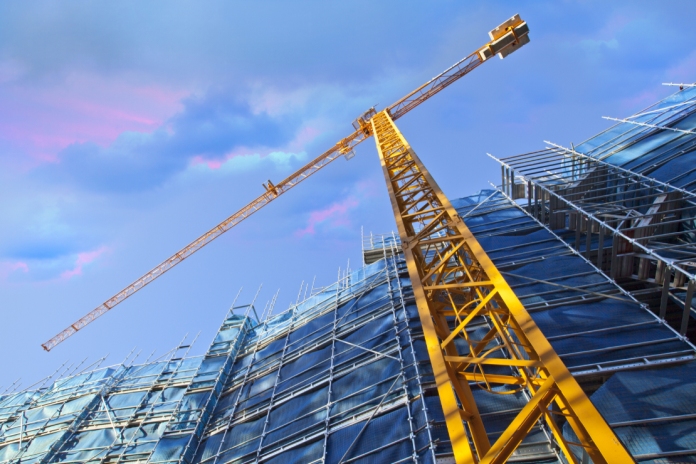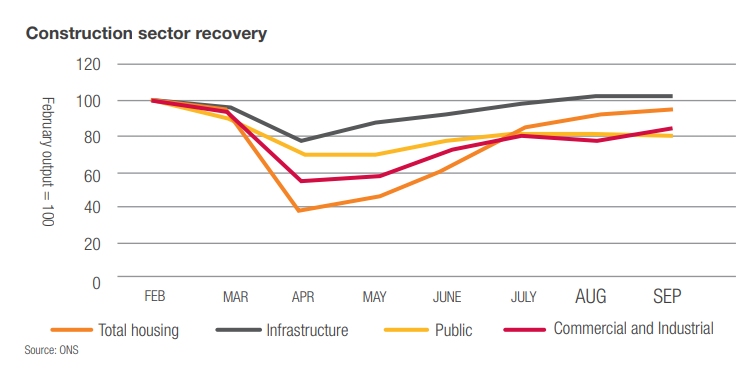
Materials prices will be the “big unknown” for construction in 2021 because no-one has “ever truly understood” the implications of Brexit.
That’s according to the latest Market View report from Mace, which predicted that materials prices “will almost certainly rise” as a result of customs declarations after 1 January.
And it warned that there could be other “significant risks” to the supply chain next year. It said: “We continue to assume there will be a deal, but not every company is ready for the new regulations which will come with it and this could lead to problems at the border. Without a deal, costs will also rise from a depreciating pound and for some products, tariffs.”
Nonetheless, while Mace warned that construction had a “long way to go to recover” after the covid-19 pandemic, with the weakest pipeline of new orders since 2012, it expected some sectors, in particular infrastructure to have a “very good year” ahead.

It said: “Though questions about finances and fiscal responsibility will only intensify once the pandemic comes to an end, a repeat of the austerity years seem unlikely. Given the difficulties facing other sectors, it is vital that the government does follow through with these plans. Not only are the government commitments and long-term infrastructure projects the main ray of light for growth in the industry, they provide companies with much needed assurance when it comes to investing and planning.”
But the fundamentals for parts of the commercial sector looked “bleak”, with working from home set to look commonplace even after the pandemic ends. It added that “more concerning than falling demand for new office space is the turmoil hitting the retail and hospitality sectors” with most businesses facing a lack of trade at a key time of the year.
When it came to housing, it said: “Encouragingly, output has bounced back strongly, but the suspicion is this is because developers are keen to complete as many properties as possible before the stamp duty holiday ends. Given housing accounted for 40% of all new work in 2019, its performance is a key component in tender prices.”
Output
Construction output experienced a strong rebound in June and July this year but slowed considerably after that. Between the second and third quarter, output across the entire industry increased by 41.7%, with the housing sector growing 84% while repair and maintenance climbed 71%. But total housing remains 4% smaller than earlier in the year.
Mace said infrastructure was the only sector that it could “confidently state” had made a complete recovery. “One takeaway from this decline is that social distancing is having a material impact on contractors’ ability to operate,” Mace said.
For construction workers, average weekly earnings were 0.5% lower in September than in February, although this was an improvement on the 9% drop that had occurred by May.
Steve Mason, managing director of Mace Cost Consultancy said: “On the face of it, the construction industry appears to have weathered the storm of the immediate impact of covid-19 remarkably well, but the uncertainties of Brexit now loom once again.
“The recent government spending commitments will provide some welcome comfort to those operating in the public sector and for long term infrastructure programmes. Other sectors look less certain, and the longer-term impact of new working patterns on commercial space will provide a combination of opportunities for repurposed space, as well as the obvious challenges for demand in the short term.
“All these factors paint an uncertain picture for 2021, and this will continue to subdue tender prices as the supply chain looks to secure pipeline workload in what looks to be another challenging year ahead.”
Mace’s advice to clients and contractors after Brexit
For clients
- Have complete understanding of the programme and the critical path. Know which packages sit on this path and understand how delays may affect it.
- Pay particular attention to high risk trades. These include cladding, gazing, steelwork, bathroom pods and M&E.
- Hold conversations with trade packages due to start later in the year, keeping them up to speed if there are delays. Coronavirus has also made it necessary to monitor their financial situation even more closely.
- Increase the risk allowance or contingency pot if necessary.
- Be aware of who holds the risk and what contracts say. Administer contracts to the letter so as to avoid any disputes or risk of litigation.
For sub-contractors
- Map out labour and material requirements for the next 12 months, paying particular attention to the first quarter of 2021.
- Understand where materials are coming from and know their ports of entry.
- If worst-case scenarios occur and there are significant delays to materials, it will be helpful to already have alternative suppliers in mind. While they will also be facing problems, increased flexibility is useful.
- If delays occur, determine whether it will be possible to make-up time later. If not, is it possible to bring in materials earlier and is there anywhere to store them?
- Labour is less likely to be a risk, but existing staff need to apply for the EU Settlement Scheme before 30 June 2021.










